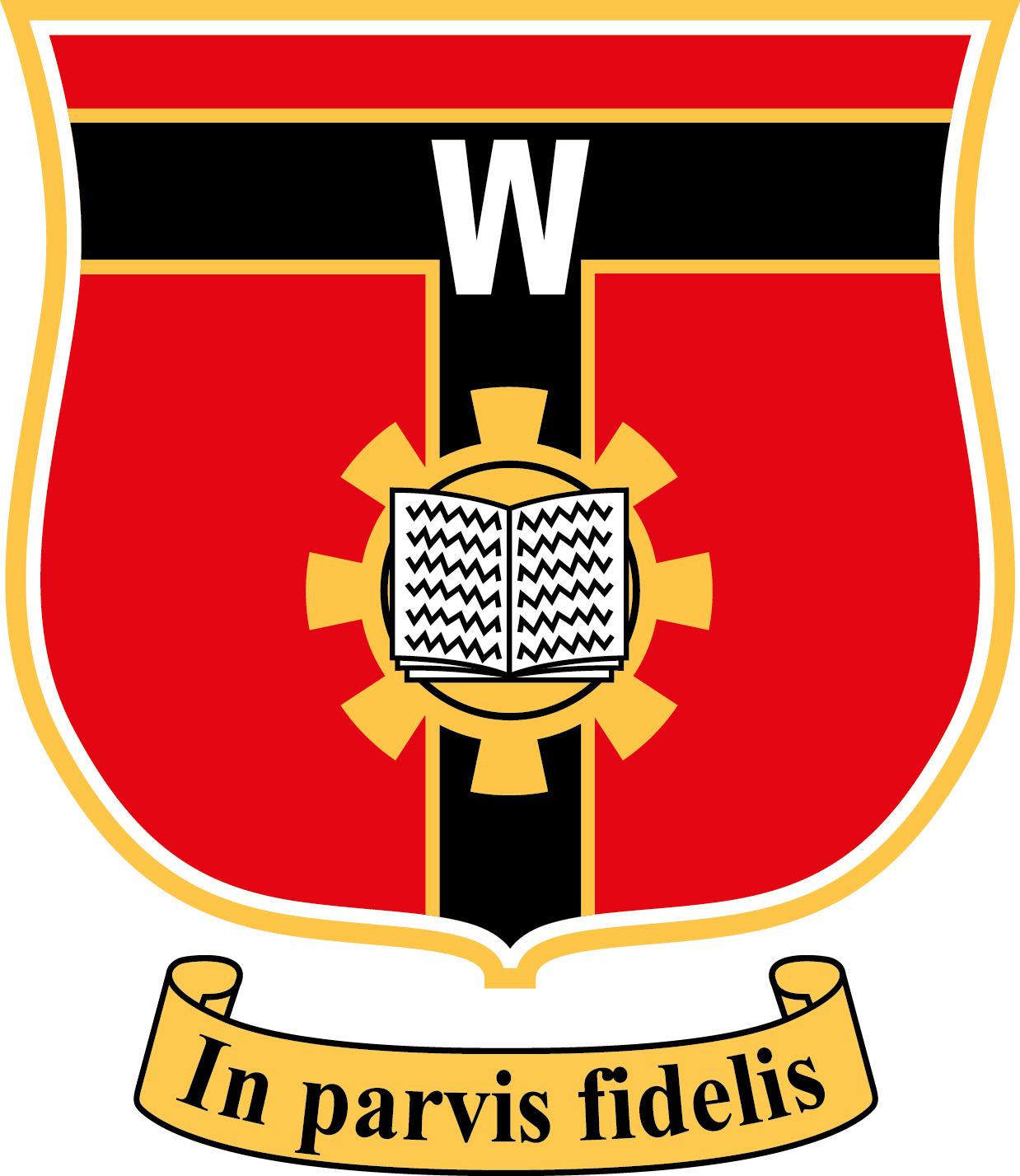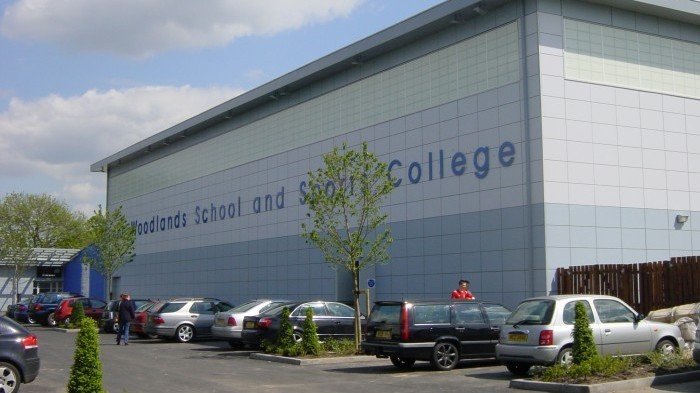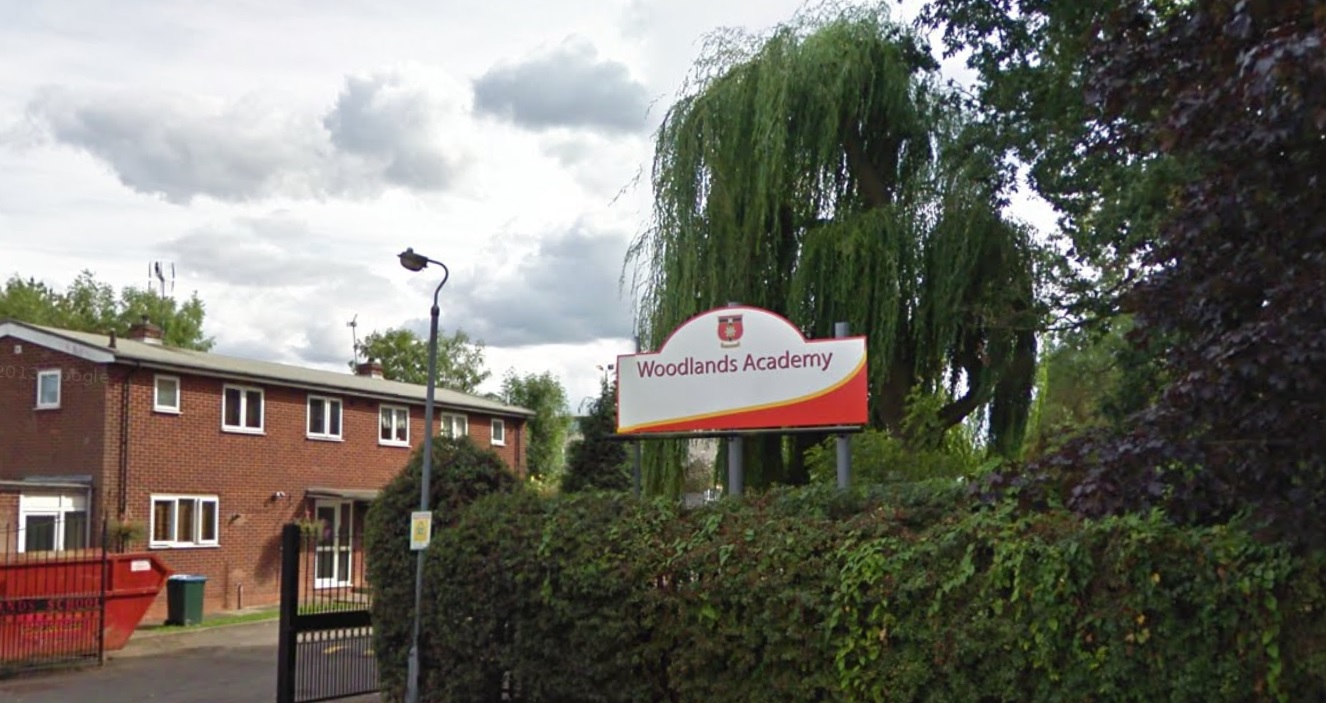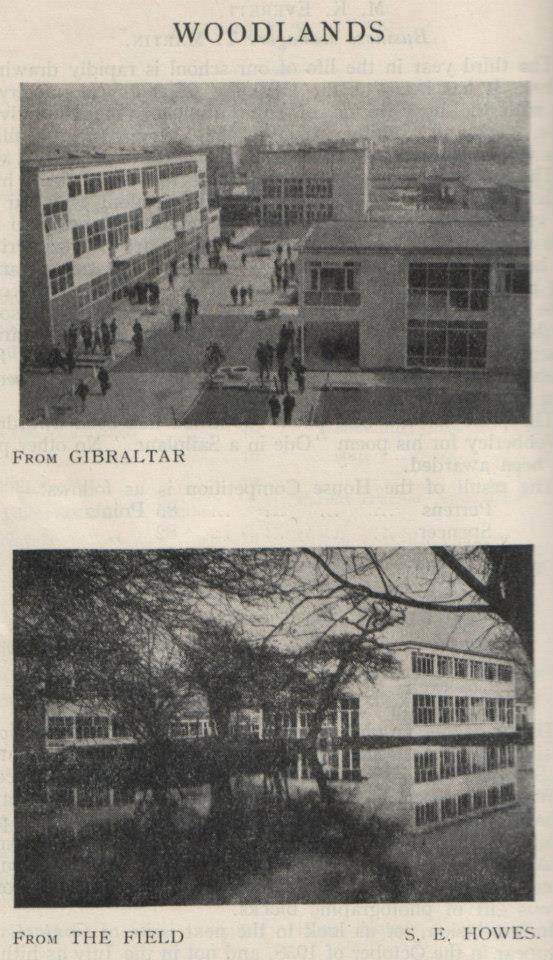The Woodlands Academy

The Woodlands Comprehensive School opened at 8.55 a.m. on Tuesday 21st September 1954, making it one of the first comprehensive schools in the country. The Headmaster, Mr. F. West M.A., had previously been Head of the Coventry Technical Secondary School.
The school opened for pupils two weeks later than planned, poor weather during the summer meant that with the exception of 5 Sixth Formers the pupils enjoyed an extended summer holiday whilst building work was completed.
The official opening did not take place until 12th October 1955, when The Right Worshipful The Lord Mayor of Coventry Alderman T.H. Dewis J.P. opened the school at 2.30p.m.
Writing in The Birmingham University Journal of Education in June 1956 Mr. West gave more detail about the birth of the school.
”The Coventry Technical School, which had been deliberately developed by its Headmaster with the support of the governors into a bi-lateral Technical – Grammar School with the comprehensive school in view, had been poorly housed in temporary huts behind the Technical College. One of the earliest decisions by the authority was to re-house the school in The Woodlands. The secondary modern pupils came from the Templars’ School, a co-educational school… Each of these schools contributed roughly 400 boys to the second forms upwards. With 300 new entrants at the age of eleven, the school began with 1,100 pupils; all of them “new boys” as far as The Woodlands was concerned. Fortunately continuity was secured as the staffs of the two schools forming two thirds of the staff required, opted to go with their pupils rather than to any other school in the city.”

The school was designed by The Development Group of The Ministry of Education in collaboration with Coventry Education Committee.
The City Architect and Director of Education put together an Advisory Committee which consisted mainly of teachers and it was the brief of this group, “to assist in the solution of the problems involved in schools of this size and complexity envisaged. The school, despite the pruning of the economy campaign, follows very closely the suggestions of the Advisory Committee.”
“The amenities of the house are less than the advisory committee hoped for, but erection came during the years when the upper limit of cost was £240 per pupil” (The Schoolmaster 1958) Coventry’s post war planners had decided to build 12 new comprehensive schools, two all boys, two all girls and 8 co-educational. Writing in “The Schoolmaster August 1958” Mr. West gave the reason for Woodlands being all boys. “The Committee was most anxious to secure popular support for its policy of comprehensive schools, but was aware that there were some parents who wished to have single sex schools for their daughters.
The decision was made that two of the twelve or thirteen schools should be girls’ schools. This necessarily meant that two others should be boys’ and Woodlands is one of the two.”
Many of the other schools took their names from historic buildings in their area however, in the case of The Woodlands there was no obvious choice so the name was chosen because of the proximity to Tile Hill Nature Reserve with its extensive woodland area.

One of the major concerns about the new comprehensives was that they would be too large, it would be impossible for the staff to get to know the pupils, who would suffer as a result. This concern was uppermost in the minds of the Advisory Committee as they worked to plan The Woodlands. Their solution was to adopt a House system as used in many public schools.
Despite pressure and attempts by some to disband it The Woodlands has retained its physical House system throughout its 50-year history. Many have argued that it is not a cost-effective way to run a school, it does not make efficient use of the buildings and is expensive to staff. However, Mr. West made it clear that not only was the school designed around its “physical houses” but that the Houses provide a quality of pastoral care that is almost impossible to achieve in any other way. “Many tears have been shed over the pitiful plight of these poor children, herded together in one vast concentration camp of a school, with nobody knowing them as individuals and nobody caring for them.
Such sympathy is quite misplaced. I doubt if there is a day school of any other type where greater care is taken of the individual – where in fact the school was planned with this as its first aim. Following the recommendations of the Advisory Committee there are physical houses in the school, and these are homes in a way, which no form room can be. Each has a hall large enough for a house assembly, for a mid-day meal and for indoor games. Each boy has a book locker and a kit locker.
There is a study room which can be used by sixth formers, House officials or anyone else at the discretion of the Housemaster. The Housemaster has a room and there is another for his staff of five each of whom is in charge of an age group under his general direction. Meals are cooked in adjacent kitchens each of whish serves two houses. At present (June1956) there are eight houses with 150 boys in each. When the school is fully developed there will be ten houses with 165 boys in each.
The relationship of the Housemaster to his House is that of the Headmaster of a small school to his pupils. He is the one who encourages them, guides them and if need be punishers them. It is not necessary to enlarge on this point, except to say that the house system is not just a device for raising teams to compete with one another. The physical home the Housemaster and his staff play a major part in caring for the social well being of the pupil. It is worth noting that each house is a cross section of the whole school. Each contains the young and the old, the able and the less able and each produces its officers from the various age groups.
The boy who will leave at 15 is not overlooked, as so many critics blandly assume.” The Woodlands’ physical house system is the key factor which set it apart from every other school in the city.

Woodlands opened in September 1954 with 8 houses: Brook, Cresswell, Malins, McLachlan, Sparkes, Spencer, Stringer and Wilson. Two more, Gibson and Smith-Clarke were added in September 1956. To populate the two new houses each of the existing 8 houses transferred one fifth of their pupils, selection was made “by lot.”
In September 1957 Wilson House was renamed Perrens following the retirement of its Housemaster Mr. F. Perrens. In July 1965 Mr. E. Ellis retired as Head of Spencer House and the House was renamed after him.
Mr. West was Headmaster from September 1954 until July 1962. In this time he successfully amalgamated the staffs of The Templars’ and The Technical School and built up an enviable reputation for The Woodlands School. Under his leadership the pupils had been organised into diverse, mixed ability groups whilst in Houses but into streamed groups for teaching, all this was about to change!
September 1962 saw the arrival of a new Headteacher, Donald Thompson, and with him came a new philosophy, “mixed ability” teaching. Donald Thompson worked tirelessly to promote the equality of opportunity offered by comprehensive schools but it was his belief in “mixed ability” teaching which set him apart. He supported his philosophy with hard evidence and demonstrated that pupils should not be streamed at age 11 but should be given a chance to develop and show their true talents over time.
Donald Thompson’s argument was a powerful one and during his Headship, The Woodlands was rarely out of the newspapers being regularly visited by politicians and educationalists interested in his ideas. Woodlands pupils were taught in mixed ability groups for their first three years, and it was not until their fourth year that they were grouped for GCEs and CSEs. “If I were to be asked to name the things of which the school has become noted over the last 17 years I would have to place at the top of the list non-streaming or mixed ability teaching as some prefer to call it…. We can rightly be proud of the fact that The Woodlands led the way, by being the first comprehensive school in the country to embrace genuine mixed ability teaching without recourse to setting or banding of any kind”.
Donald Thompson retired at Christmas 1980 aged 60. In his 18 and a half years as Head he did not have one single day off through illness.
Walter Hogarth took over from Donald Thompson in January 1981; he had previously been Headmaster at Holdgate Comprehensive School in Barnsley. His Headship was characterised by significant changes both in education as a whole and in the school in particular.
In 1983 legislation forced LEAs to publish comparative examination results. The first Coventry league tables placed The Woodlands first in three of the six categories, second in two more and fifth and in the final category. The school was at the forefront of education in the city.
However, the winds of educational change were blowing in 1983. Across the city the number of school children was declining, forcing the LEA to cut places at popular schools. The Woodlands intake was reduced from 300 to 240 provoking parental anger and 32 appeals for places, the highest for any school in the city. Parents moved home to ensure a place for their sons and house adverts often stated “Within The Woodlands’ catchment area.” Despite protests outside the school and the involvement of the local M.P., the LEA stuck to its policy and the school was reduced to an eight-form entry. Inevitably this affected the number of Houses. Brook and Gibson closed, followed by Perrens.
Sixth form students were originally based in Houses and in most cases they occupied the room adjacent to the large House Room. Then for a short time they were based in the Upper and Lower library areas. The closure of Houses in the 1980s released space and a Sixth Form Centre was formed in the two Houses on the right of the Main Drive, formerly Smith-Clarke and Gibson.
The upset caused by these closures was considerable and begs the question, “Why did they close those Houses and not others?” The answers lie mainly in the fact that the Heads of these particular Houses were retiring or moving to other posts at that time.
1985 was also a year of change, there were parental ballots on single sex schooling which resulted in Caludon Castle becoming co-ed. Woodlands parents voted in favour of remaining all boys, leaving The Woodlands as Coventry’s only boys’ school.
The 1988 Education Act introduced Local Management of Schools, in which budgets were delegated directly to schools. It also brought a new layer of management. Senior Teachers became Assistant Headteachers and the school created the SMT or Senior Management Team, later to become the Senior Leadership Team.
The 1990s started badly with 5 suspicious fires in 18 months. Stringer, Gibraltar and Leonardo were extensively damaged. The rebuild of Leonardo in 1992 cost £1.5 million. Despite rewards of £1000 being offered, no culprits were ever found but the school invested heavily in hi-tech security systems.
Walter Hogarth retired in May 1996. During his time as Headteacher he not only maintained the high standards set by his predecessors but crucially he steered the school through one of the most challenging phases in its history. No other Head had been forced to deal with so many changes in such a short space of time, and it is testament to his leadership that The Woodlands continued to flourish.
Graham Legg was Headteacher for two and a half years, only a short time but he too made changes. He established morning briefings, created a central staff room and closed Malins House. He also developed two canteens serving hot meals on a cafeteria basis. These canteens occupied two former Houserooms. This change fundamentally altered the nature of the Houses, leaving sandwich eaters “in House” but hot meal pupils in the canteens supervised by SLT and duty staff. In 1997 the school had 6 Houses and a Post 16 Centre.
January 2000 saw the arrival of David Hebden. It was decided to move the Main Office by the new security gate. Given the opportunity to re-furbish the complete block, the school created a new library, staff room, main office, staff toilets, and new offices for the Headteacher, Mr. Hebden and Deputy Headteacher, Mr. Charlton. The Sixth Form were relocated, yet again, to their current home in the old library.
In order to create economical Sixth Forms, most Coventry schools operate “Consortia” arrangements with neighbouring schools. The Woodlands was linked with Tile Hill Wood Girls School for many years. To strengthen this link, the two sixth forms were amalgamated under a new name, and in 2001 The West Coventry Sixth Form was created which was later joined by Westwood Academy.
Despite attracting approximately 200 pupils a year, The Woodlands continued to streamline and rationalise its House structure and in July 2003 Smith-Clarke House closed its and the school settled on having 7 houses.
The next item on David Hebden’s agenda was the pursuit of Specialist School status. What more obvious choice of specialism for The Woodlands than sport?
After a great deal of hard work by a team of staff and fundraising events by the pupils and parents, the school was awarded Sports College status at its first attempt in 2003.
Mr Neil Charlton took over as Headteacher 2004 until his retirement in 2015, succeeded by Dr Roger Harris as Acting Headteacher until the amalgamation of the Woodlands Academy with Tile Hill Wood School and Language College which started at Easter 2016. In 2011 the Woodlands School converted to Academy Status and was renamed Woodlands Academy.
Adapted from https://web.archive.org/web/20090905234002/http://www.thewoodlandsschool.org/si_history.html
https://en.wikipedia.org/wiki/Woodlands_Academy,_Coventry#History
